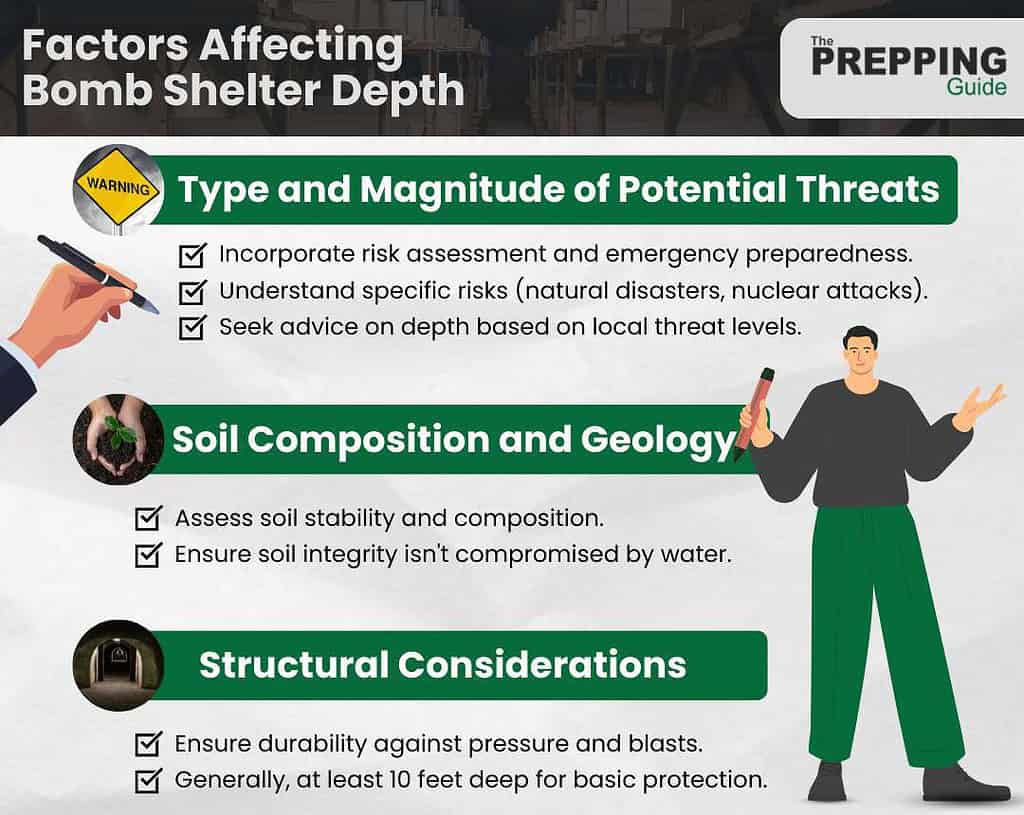
Introduction
Building a bomb shelter is like constructing a fortress, providing you with a sanctuary amidst chaos. Just as a skilled general assesses the battlefield before strategizing their defense, you too must carefully consider various factors when determining how deep your bomb shelter should be.
Factors Influencing Bomb Shelter Depth
When determining the depth of a bomb shelter, you need to consider three key factors: the type and magnitude of potential threats, soil composition and geology, and structural considerations.
Type and Magnitude of Potential Threats
To accurately determine the depth of your bomb shelter, consider the type and magnitude of potential threats you may face. Security measures, risk assessment, emergency preparedness, hazard analysis, and threat assessment are all crucial factors to take into account.
The deeper your bomb shelter is, the better protected you will be against various threats. For example, if you live in an area prone to natural disasters like tornadoes or earthquakes, a deeper shelter would provide more security against collapsing structures. Additionally, if you're concerned about potential nuclear war, a deeper shelter can offer better protection from the blast and radiation effects.
Soil Composition and Geology
The strength of the ground beneath your feet can greatly impact the level of protection your underground bunker offers. Soil stability and geology are crucial factors to consider when determining the depth of your bomb shelter.
Before construction, it's essential to conduct geological surveys to assess the composition and stability of the soil. This information will help you determine if excavation techniques need to be modified or if additional support structures should be implemented.
Moreover, understanding groundwater levels is vital, as excessive water can weaken the soil and compromise the integrity of underground structures.
Structural Considerations
Constructing a bomb shelter involves carefully considering the structural aspects to ensure it provides a secure haven underground. When it comes to the construction of a bomb shelter, reinforcement techniques play a crucial role in ensuring its strength and durability.
The depth requirements for a bomb shelter depend on various factors, such as the type and size of bombs anticipated, as well as the desired level of protection. However, typically, bomb shelters should be at least 10 feet deep to provide adequate shielding from explosions and debris.
It is important to note that building deeper shelters may pose technical and engineering challenges due to increased soil pressure and excavation difficulties.
Additionally, air purification systems are essential in creating a safe environment within the shelter by filtering out harmful gases and contaminants.
The Calculation: How Deep Should Your Bomb Shelter Be?
Determining the ideal depth for a bomb shelter involves careful calculation, considering various factors such as calculation methods, depth requirements, excavation challenges, reinforcement techniques, and ventilation—————————————————————————————————————————————————————————————–
By: kiezelamquiz
Title: How Deep Should Your Bomb Shelter Be? Factors and Guidelines for Optimal Protection
Sourced From: thepreppingguide.com/how-deep-should-bomb-shelter-be/
Published Date: Fri, 16 Feb 2024 06:24:01 +0000

